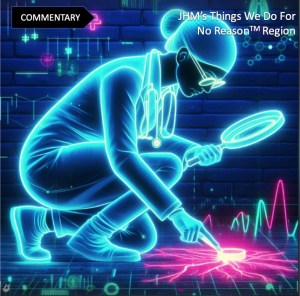#NephMadness 2024: Things We Do For No Reason(TM) – In a Bind? Phosphate Binders May Not Be Your Answer in AKI!
Submit your picks! | NephMadness 2024 | #NephMadness
Jaime Uribarri @lowage
Jaime Uribarri, MD is currently Professor of Medicine at the Icahn School of Medicine at Mount Sinai and Director of the Renal Clinic and the Home Dialysis Program at the Mount Sinai Hospital. In parallel with his clinical activities, Dr Uribarri has been very active in clinical investigation for more than 40 years. His main areas of research have been on acid-base and fluid and electrolytes disorders as well as nutrition in chronic kidney disease and diabetic patients.
Competitors for JHM’s Things We Do For No Reason TM Region
Team 1: Inpatient Use of Phosphate Binders in AKI vs Team 2: Urine Anion Gap

Image generated by Evan Zeitler using Image Creator from Microsoft Designer, accessed via https://www.bing.com/images/create, January, 2024. After using the tool to generate the image, Zeitler and the NephMadness Executive Team reviewed and take full responsibility for the final graphic image.
The Journal of Hospital Medicine’s Things We Do For No ReasonTM Region boasts two strong contenders for NephMadness Champion! Hyperphosphatemia is a common problem in dialysis patients and is associated with increased morbidity and mortality. It is important to emphasize that the relationship between serum phosphate and outcome in patients with kidney failure is only an epidemiologic association and not proven cause and effect. With the unfortunate recent cessation of the HiLo Trial, there is currently one randomized controlled trial trying to elucidate whether changing serum phosphate levels in dialysis patients indeed changes the clinical outcome. In the meantime, there is strong indirect evidence from human, animal, and in vitro studies strongly suggesting that hyperphosphatemia should be controlled in CKD/ESRD patients.
Despite adequate dialysis and advice on limiting dietary phosphorus intake and extensive use of oral phosphorus binders (about 60% of patients), a serum phosphate of 4.5 mg/dL or higher is still found in 72.3% of hemodialysis patients and 75.1% of peritoneal dialysis patients in the United States in 2020.
In view of the above, it is not unreasonable that nephrologists, who are trained to use oral phosphorus binders to control hyperphosphatemia in CKD, have extrapolated the data and applied it to AKI. The data on use of oral phosphate binders in AKI, however, is scanty and weak.
I would agree with the general concept that the inpatient use of phosphate binders in patients with AKI is not recommended, except in unique situations. The two main arguments against their use are:
- Limited availability of phosphate to bind in the gut lumen. One should be aware, however, that even so-called “renal friendly” enteral feedings (such as Nepro) may contain 170 mg of phosphorus per 8 fl oz or 237 ml (about 680-700 mg phosphorus intake daily, which happens to be the amount of dietary phosphorus intake advised). In the presence of enteral tube feeding, however, oral binders should not be used t.i.d. but throughout the day.
- Poor binding capacity of most phosphorus binders in current use. Aluminum-containing preparations are better binders, but current advice is not to use them because of potential aluminum toxicity.
The above conclusion becomes very straightforward when the patient is also getting maintenance acute hemodialysis or continuous renal replacement therapy, since phosphorus is effectively removed by these therapies much more effectively than phosphorus binders.
The other contender, use of urine anion gap (UAG) as a surrogate marker of UNH 4, is very flawed from a physiologic standpoint for the reasons outlined in the region post. While measurement of UAG within the context of hyperchloremic metabolic acidosis (a negative UAG suggests diarrhea instead of RTA or other causes of acidosis) is a relatively useful tool, diarrhea should be easily elicited from history. Still, while it may have significant limitations, going through the mental exercise of calculating a UAG causes no physical harm to our patients. In view of the potential side effects of oral phosphate binders, its use without an indication is worse that measuring the UAG when trying to establish cause of non-anion gap metabolic acidosis.
So while I truly believe either of these teams deserve to win NephMadness, it is the Use of Phosphorus Binders in Acute Kidney Injury hitting a 3-pointer at the buzzer, to advance to the Effluent Eight!

Copyright: DenisNata/Shutterstock
– Guest Post written by Jaime Uribarri @lowage
As with all content on the AJKD Blog, the opinions expressed are those of the author of each post and are not necessarily shared or endorsed by the AJKD Blog, AJKD, the National Kidney Foundation, Elsevier, or any other entity unless explicitly stated.
Click here to read the TWDFNRTM region
Submit your picks! | #NephMadness | @NephMadness


Leave a Reply